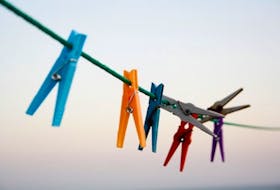I started salmon angling in the mid-1950s and have sadly witnessed drastic declines in stocks. In those early years, anglers could kill eight salmon per day. Last year, anglers in this province were permitted six for the entire season and in mid-August all rivers on the island were closed to retention angling because of low abundance.
This came as a shock to many. But had we been observing the signs, every one of us could have predicted the outcome:
• Salmon abundance did not significantly increase as was expected since the commercial moratoriums in the 1990s.
• South coast Newfoundland salmon populations were designated “threatened” in 2010.
• In the past 30 years multi-sea winter salmon (MSW), primarily female breeders, decreased by 90 per cent.
• Salmon retention in the Maritimes ceased a few years ago.
• At sea survival of smolts is low and a major concern.
• Scientists estimated salmon abundance in North America was about 10 million in the early 1970s. Today the estimate is less than 3 million.
The facts are clear: Atlantic salmon stocks are rapidly declining and in serious trouble. I believe the situation is so dire that immediate action is required to save the remaining salmon.
Predators like seals, killer whales, northern gannets, gulls, striped bass, all have an impact on stocks, as do low caplin stocks and climate warming and disease from aquaculture farms. We have no control over most of this, but we do have control over our insatiable human greed to kill as many salmon as we can.
In 2016, Canadians killed approximately 58,000 salmon. The majority, 38,000, were killed by anglers. Sadly, 1,823 were large MSW female breeders killed by anglers in Quebec. (A positive note: anglers also released 69,000 salmon, nearly half of which were MSW fish). Aboriginal groups killed around 20,000 salmon.
The facts are clear: Atlantic salmon stocks are rapidly declining and in serious trouble.
Fisheries at St-Pierre-Miquelon killed about 1,500 salmon, while Greenlanders killed around 5,000, down from 17,000 the previous year. The Greenland kill was about two per cent of the kill in 1982 of 336,000 salmon. Most of these were MSW fish destined for Canadian rivers.
Why are we bent on pushing the species to extinction?
With salmon stocks at their lowest in recorded history, it’s the Fisheries and Oceans minister’s responsibility to ensure that DFO’s wild Atlantic salmon policy: “Conservation of wild Atlantic salmon, their genetic diversity and their habits is the highest priority in resource management decision making,” is indeed the highest priority. He must demonstrate that Canada recognizes the dire situation of the stock and make difficult, but necessary changes in 2018 harvests before stocks collapse completely.
He should halt the killing of salmon by all Canadian user groups in 2018 for three years or more while monitoring returns annually. In the interim, he should direct DFO to work with the Committee on the Status of Endangered Wildlife in Canada to assess the status of wild Atlantic salmon and determine if stocks are at “at risk,” “threatened” or “endangered” and prepare appropriate management plans for future sustainability.
I’m sure the minister will receive considerable opposition from resource users, many of whom will want to kill a “salmon or two” for the table. He should not appease those users by allowing 10,000 to 20,000 or more salmon to be killed in the current stock situation.
The minister should also launch a public awareness campaign to shame Greenland and France into helping us the save the salmon. He can learn from the tactics Greenpeace successfully used to halt the annual seal hunt in Canada.
It will also be important to ensure “eyes” are on the rivers. DFO should allocate additional enforcement resources to the rivers and bays and allow anglers to catch and release salmon, as their presence on the rivers is a great deterrent to poaching.
It is evident that wild Atlantic salmon stocks are a trickle of their former populations and under great threat. The minister is in a position to halt the slaughter in Canadian waters and demand support from Greenland and France to save the remnants of our wild Atlantic salmon before it is too late.
Donald Hustins, angler, author and conservationist
St. John’s








